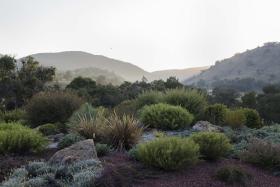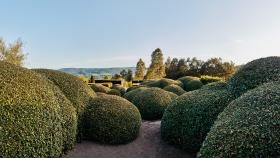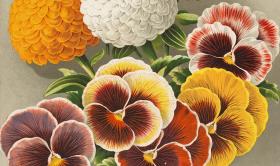In 2016 we celebrate 200 years since the founding of Sydney’s Royal Botanic Garden and 50 years since landscape architecture was established as a profession. The Library will recognise these anniversaries in two complementary exhibitions, opening in September under the banner Planting Dreams.
In preparation, I undertook a survey of larger, innovative gardens created in NSW since the 1980s, and interviewed the designers involved. Leading photographers Jason Busch, Murray Fredericks, Sue Stubbs and Nicholas Watt recorded a selection of these gardens. Along with the survey’s findings, their spectacular images will form a permanent collection at the Library, and are the essence of the exhibition Planting Dreams: Grand Garden Designs.

Today’s growing appreciation of the Australian landscape and its more remarkable plants echoes the sentiments of nineteenth-century travellers such as botanical artist Marianne North and landscape gardener William Guilfoyle, who admired the handsome rainforest trees and flora found along the east coast.
In recent decades, the Japanese garden has become an important influence through its use of massed clipped shrubs, known as ‘cloud pruning’, of ‘borrowed landscapes’, and of subtle conjunctions of stone and gravel.
Trans-Atlantic phenomena emulated here include Oehme and van Sweden’s sweeping banks of native grasses in North America, and Dutchman Piet Oudolf’s masterly deployment of seasonal field plants along New York’s High Line. These are examples of a significant trend in landscape design using ‘architectural foliage’. Strongly textured and coloured plants in clever combinations are frequently seen in contemporary landscapes; another international trend is for gardens to be designed as a setting for modern sculpture.
In exploring innovative landscape designs in NSW, many exciting gardens came into view. Most were designed to complement the natural setting, placing new garden elements into an established landscape. At Thubbul, near Bermagui on the far South Coast, forest glades are accented by low walls that define spaces set with sculptures and flowering shrubs. A different relationship with wild and rugged country is found at Eagles Bluff, south of Tenterfield, where sweeps of lawn and banks of subtly coloured ornamental grasses and shrubs allow a seamless transition between the garden and the wider landscape.

In complete contrast, the garden at Sea Peace on the far North Coast turns its back on paddocks and broad-acre residential development to recreate the wondrous native forest which existed before land-clearing. Its trees are layered with orchids and staghorns and under-planted with Helionias and Hedychiums.
For some, the classical garden ideal remains, but is interpreted in a new way. Horse Island on Tuross Lakes has been transformed with sweeping lawns among tall-trunked eucalypts framing views to distant mountains. The somewhat formal garden provides a distinctively Australian experience by only featuring indigenous plants. Nestor Farm, near Berry, recalls great English gardens where smooth lawns descend between clumped trees to a lake. The tradition has been reinterpreted to grand effect using distinctive East Coast rainforest trees.
Landscape opportunities in a big city are different. In Sydney the survey discovered several innovative gardens which are settings for historic houses. In the city, large private gardens are rare, and inventive outcomes in the public realm are vital. Paddington Reservoir Gardens and Prince Alfred Park demonstrate the importance of the public park as a haven for urban dwellers, while the outstanding roof garden above apartments at MCentral in Pyrmont brings a meadow into the heart of the city.
Making a larger garden is an age-old pursuit to create one’s own earthly paradise — a beautiful retreat from the everyday world. A more expansive ‘canvas’ enables the exploration of bold ideas, and the Library is recording these remarkable creations as an important reflection of our own age.
Planting Dreams: Grand Garden Designs, curated by Howard Tanner, was a free exhibition from 1 September 2016 to 15 January 2017.


